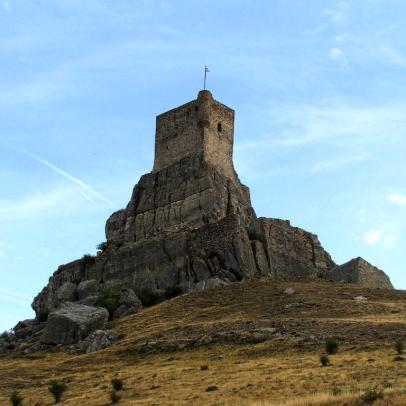This impressive castle stands on a big limestone crag, overlooking the town of Atienza. The fortress is adapted to the shape of the narrow extended rocky crag.
Only the door located on the northern side, which is in ruins, has survived to the present. It is possible to see remains of the two turrets, some parts of the wall and the torre del homenaje (on the south side), which had a rectangular base and it was three stories tall. It is also possible to see the stone-walled tanks, which had a rectangular shape and a brick vault.
The hill was inhabited during the Celtiberian period. However, it was the Arabs who used this position to secure and fortify the area. They built an alcazaba and transformed Atienza into an important military post, as noted in El Cantar de Mío Cid. After the marriage between the Infantes of Carrión and El Cid’s daughters, which was celebrated in Valencia, the newly-wed returned to Castile. The poet says that they marched without rest, crossing through Sierra de Pela, and passing on the left of the town of Atienza, set on “a strongly fortified crag”; that is, a fortress controlled by the Muslims.
The castle underwent considerable changes following the Christian conquest of Atienza, which took place towards the end of the 11th century. The castle owes its current appearance to alterations made during the rule of King Alfonso VIII (13th century).
In the area surrounding the crag it is possible to see the remains of another walled enclosure that was part of the castle and was built next to a round path.
Visits: Free admission. Although the turret is closed to the public, it is worth climbing to the top of the hill. There are great views once at the top and it is possible to see remains of the old wall. Also it is easy to distinguish the Romanesque church of Santa María, which is located within close proximity.
Rev. PAB 27.12.18











